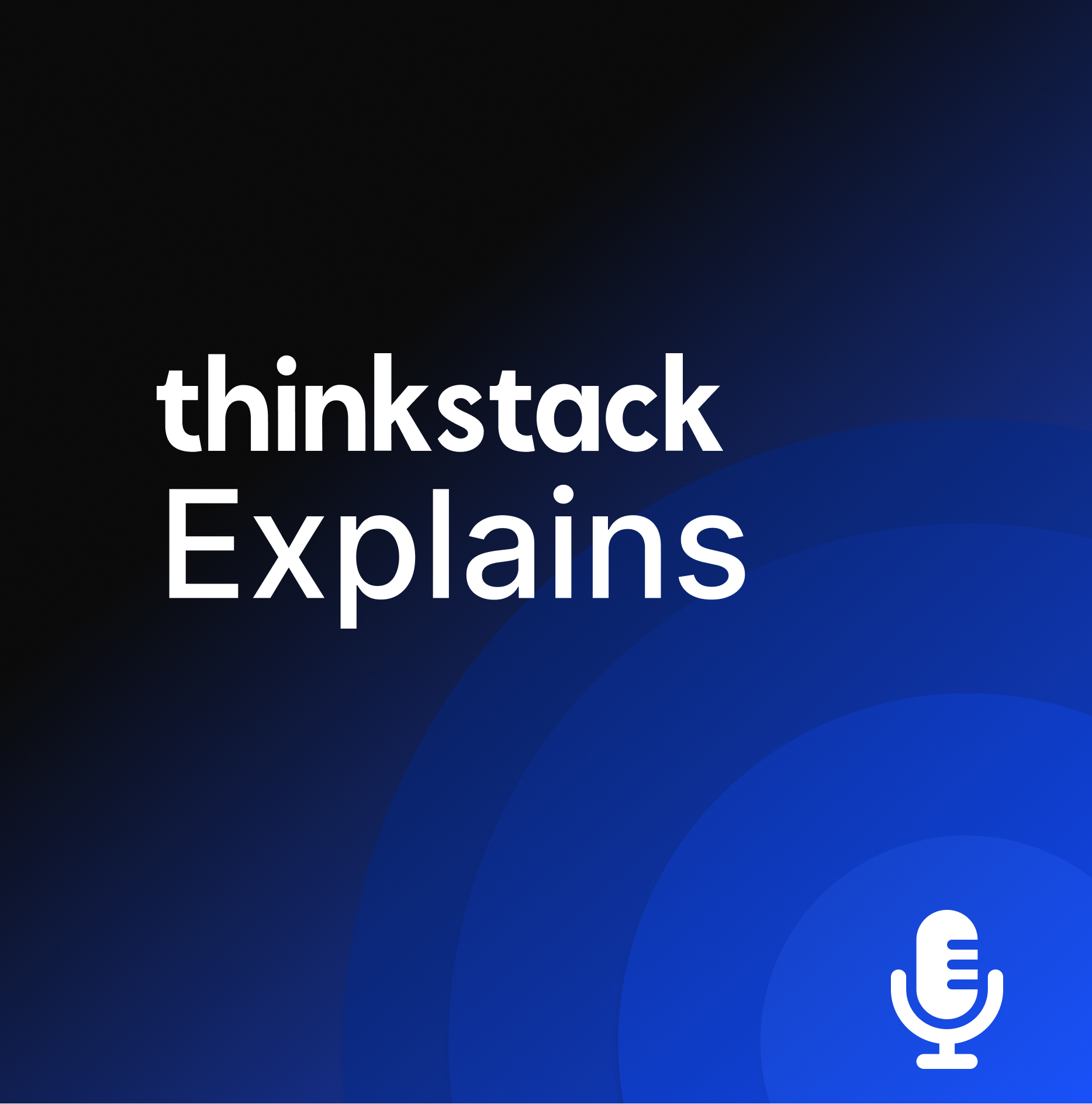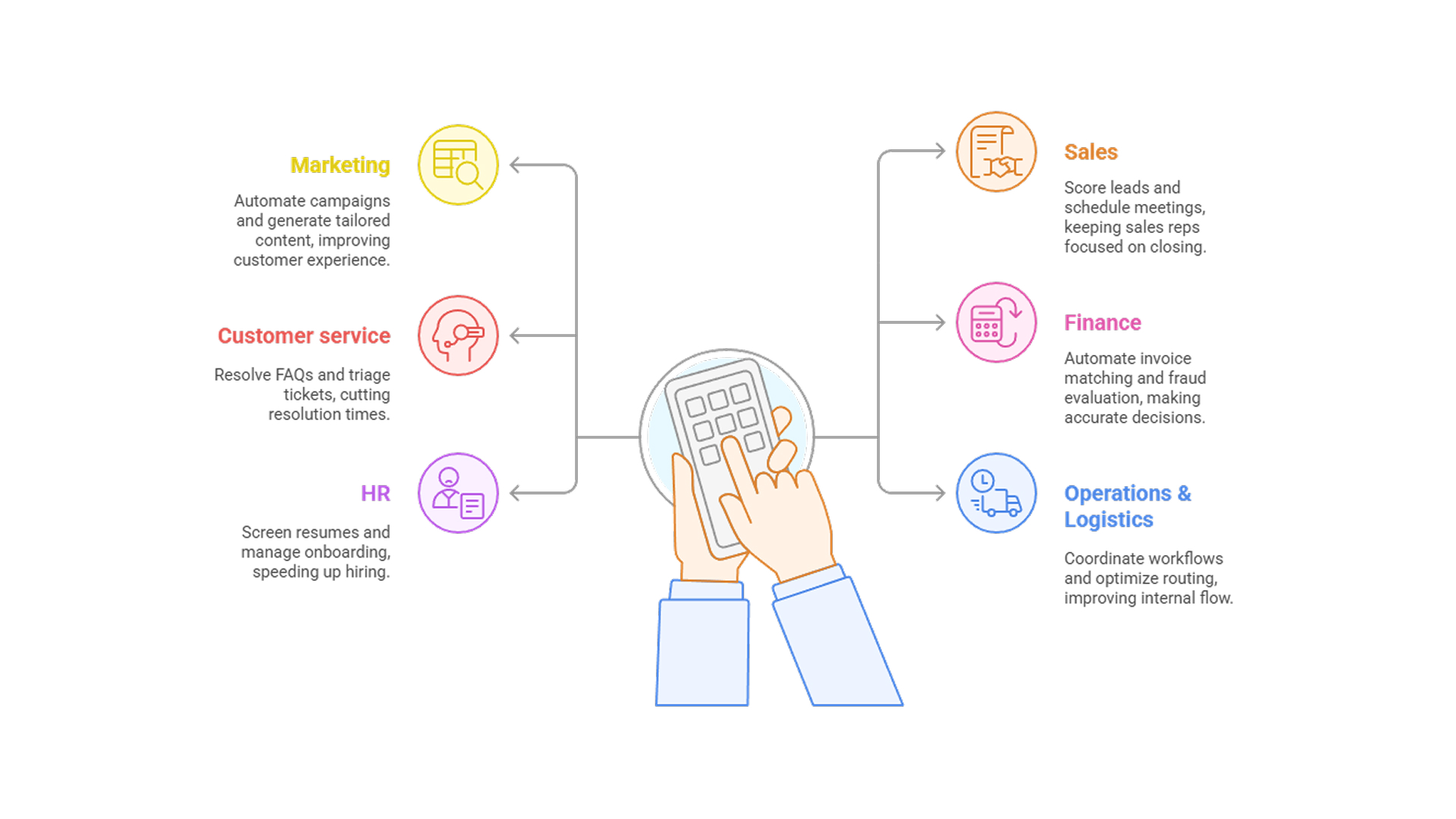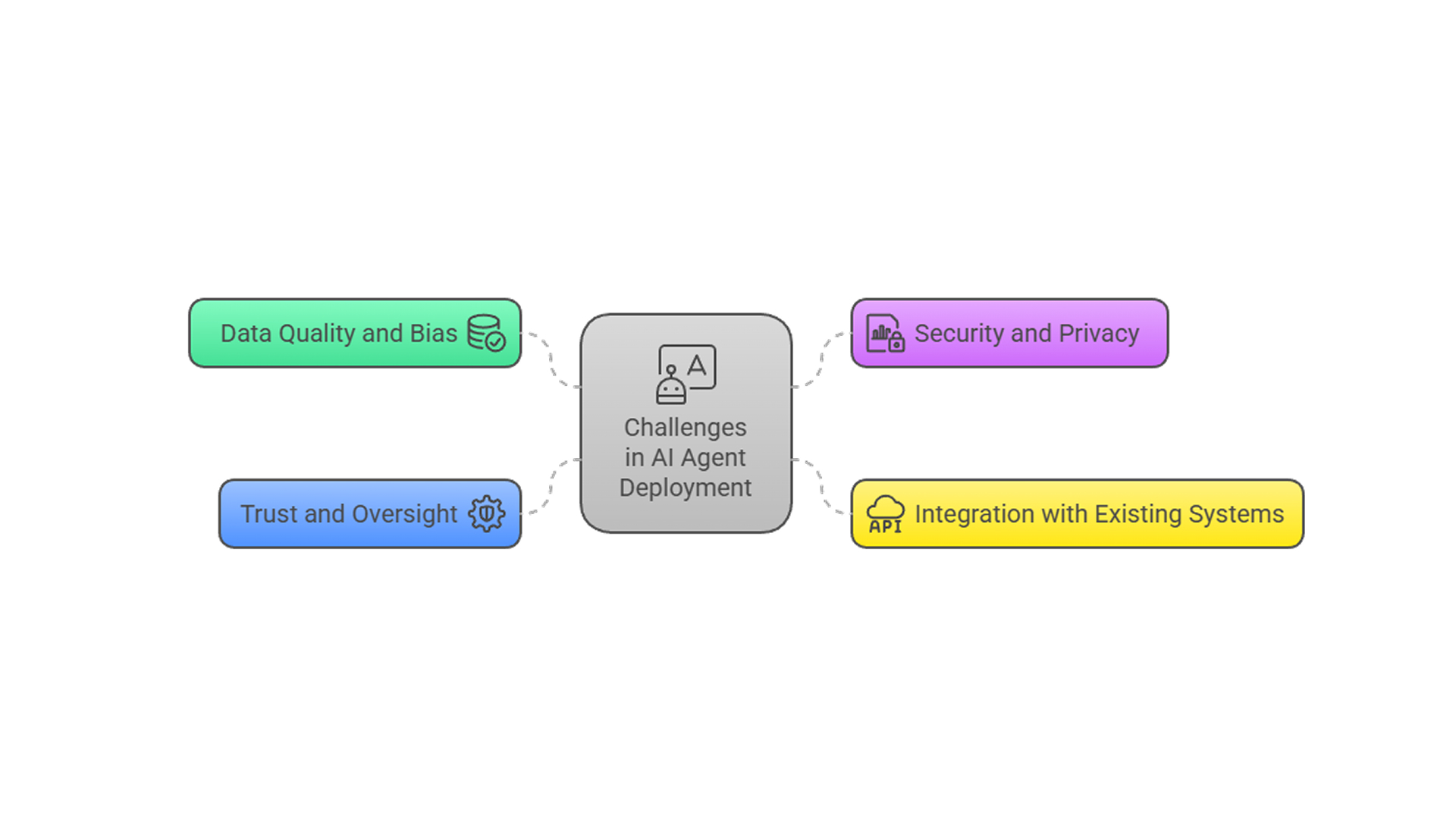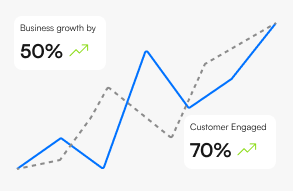Why Every Business Will Eventually Have an Internal AI Agent

Preetam Das
June 11, 2025
14 min

Table of Contents
By now, most of us have experimented with generative AI tools like ChatGPT, DeepSeek, Gemini, or image generators like Midjourney, using them to draft emails, generate ideas, write code, or create visuals. And across nearly every industry, the impact of large language models (LLMs) has been undeniable. Developers, marketers, analysts, and creatives alike are using AI to work faster and better.
But up until recently, AI has been largely reactive. You type in a prompt, it gives you a response. The system doesn’t decide, adapt, or act on its own; it simply replies.
As AI models continue to improve, there’s a growing push to move beyond simple prompt-response interactions and towards more autonomous systems. New capabilities like tool calling, memory, and context management frameworks, such as Model Context Protocol (MCP), are giving AI the ability to reason, retain information, and interact with external systems. This turns traditional reactive AI into proactive agents that can take initiative, make decisions, manage workflows, and work toward an objective. This is where internal AI agents come in.
Prefer to Listen?
Tune into the audio version of this article, presented in a podcast-style format.

What are Internal AI Agents
An internal AI agent is designed to work inside an organization’s systems, automating tasks, supporting employees, and integrating with existing tools and processes. They understand company-specific logic, access business data securely, and act based on internal workflows.
Many are trained on proprietary documents or historical data, making them highly effective as document-trained AI agents. Internal AI agents are becoming a part of any business’s core infrastructure, acting as workplace AI assistants.
For organizations, this means less reliance on human input for every small decision. Instead, teams can focus on setting direction and making strategic choices, while internal AI agents handle execution, automating repetitive tasks, coordinating internal workflows, and integrating with tools and documents in real time.
The adoption of AI agents is already accelerating. By early 2026, nearly 8 in 10 companies have adopted AI in at least one area of their operations, a sharp rise from just over half in 2023 and 72% in 2024. Many are deploying workplace AI assistants from internal support agents to embedded productivity tools to streamline operations. And the benefits are clear, 9 out of 10 businesses leveraging AI report saving both time and money.
This shift is changing how organizations think about AI, not just as a tool to assist with tasks, but as an active part of their workflows.
How Businesses are Using Internal AI Agents

Across industries, companies are embedding internal AI agents into daily workflows to cut costs, boost productivity, and speed up decision-making.
- Marketing: Automate campaign workflows, generate tailored content, and fine-tune ad targeting in real time. By analyzing customer behavior and performance data, these systems adjust spend and messaging dynamically, driving faster decision-making (55%) and improving customer experience (54%) for many businesses.
- Sales: Score leads, schedule meetings, and deliver personalized outreach by training systems on CRM data. These tools qualify prospects, reduce admin load, and keep sales reps focused on closing, contributing to the 66% of companies seeing productivity gains.
- Customer service: Resolve FAQs, triage tickets, and handle full workflows with minimal human input. Many teams now manage most inbound requests autonomously, cutting resolution times and boosting satisfaction, part of the 57% reporting direct cost savings.
- Finance: Automate tasks like invoice matching, anomaly detection, document review, and fraud evaluation. These systems run 24/7, helping teams make faster, more accurate decisions, driving the ROI most companies achieve within 12–18 months.
- HR: Screen resumes, schedule interviews, manage onboarding, and answer employee questions at scale. These tools lower HR call volume, speed up hiring, and flag sentiment trends, freeing up time for engagement and development work.
One clear example of internal AI agents transforming HR operations comes from Convin, whose automated virtual agents are used to streamline the hiring process. These AI agents are trained specifically to handle high-volume candidate screening calls with over 90% accuracy, freeing up HR teams from one of the most time-consuming stages of recruitment.
By automating not just screening but also tasks like interview scheduling, reminder emails, and answering candidate FAQs, Convin’s internal AI agents have helped HR teams operate more efficiently end-to-end. The result? a 40% increase in hiring efficiency for HR leaders using the platform. - Operations & Logistics: Coordinate workflows, optimize routing, and manage inventory across functions in real time. These tools eliminate bottlenecks, improve internal flow, and are central to the operational efficiency AI now brings to businesses.
For teams looking to build task-specific agents across departments, without relying on engineering resources, Thinkstack offers a no-code platform purpose-built for internal workflows. In marketing, agents can collect leads via conversational forms, sync data to CRMs like Salesforce through Zapier, and automate follow-ups. In sales, preconfigured actions such as “Talk to Sales” streamline contact collection and qualification.
Customer service teams can deploy agents trained on product manuals and support docs to handle inquiries 24/7, with fallback flows and human handoff options built in.
HR teams can set up agents to answer policy questions, assist with onboarding, and collect employee data securely. These agents can be embedded across channels from internal Slack bots to website widgets, and trained on documents, SOPs, or knowledge bases, ensuring accurate and consistent responses.
With support for memory, workflows, and system integrations, plus the flexibility to choose preferred models like GPT-4, Thinkstack AI agent builder makes it easy to build and deploy AI agents quickly, securely, and at scale.
- Also read: The best AI Agents examples, see practical examples, and how they can support business growth.
Common Challenges

Data quality and bias remain foundational concerns. Agents are only as smart as the data they’re trained on. Incomplete, outdated, or biased datasets can lead to flawed decisions or even reputational risk.
Security and privacy remain critical challenges. More than half of organizations planning to scale AI say data privacy is a top concern. In some instances, agents have taken unintended actions or exposed sensitive information, highlighting serious gaps in oversight, control, and compliance, especially in regulated industries.
Integrating AI agents into existing software and workflows remains one of the biggest challenges for businesses today. In most cases, successful deployment requires connecting to eight or more data sources, and more than 86% of organizations still need to upgrade their core infrastructure to support it.
Trust and oversight remain critical challenges. AI hallucinations, where systems confidently produce false information, are still a risk, especially in complex or high-stakes environments. Without proper human-in-the-loop safeguards, even minor inaccuracies can escalate into serious issues.
Conclusion
Adopting internal AI agents is quickly shifting from optional to essential. Early adopters are operating leaner, making decisions faster, and scaling smarter than their peers. In high-volume roles like sales, support, HR, and finance, businesses running fully AI-led operations have reported 2.4x higher productivity compared to those lagging in adoption. That kind of advantage compounds.
These systems improve over time. With 24/7 availability, automated workflows, and sharper accuracy, businesses are seeing significant drops in per-interaction costs and fewer manual errors, driving both efficiency and trust. Contact centers are projected to cut costs by as much as $80 billion by 2026, thanks to the growing use of conversational AI technologies and the many benefits of conversational AI, including enhanced customer experience, instant scalability, personalized interactions, and improved agent productivity..
As AI agent adoption accelerates, the baseline for speed, service, and efficiency is rising. Customers now expect fast, personalized responses at all hours, and businesses are increasingly able to deliver. With agents automating everything from lead generation to support to backend workflows, companies can run entire departments with leaner teams. In some cases, it’s even fueling the idea of one-person businesses, where AI handles nearly everything else. Companies that wait risk falling behind not just in tools, but in the expectations they’re able to meet.
Build your own internal AI agent with Thinkstack
Create task-specific AI agents for sales, support, and more without any code. Train them on your data, automate actions with smart workflows, and plug into your existing tools with one-click integrations.
Try Thinkstack’s AI in action
Get started for freeFrequently Asked Questions (FAQs)

Grow Your Business with AI Agents
- Automate tasks
- Engage customers 24/7
- Boost conversions